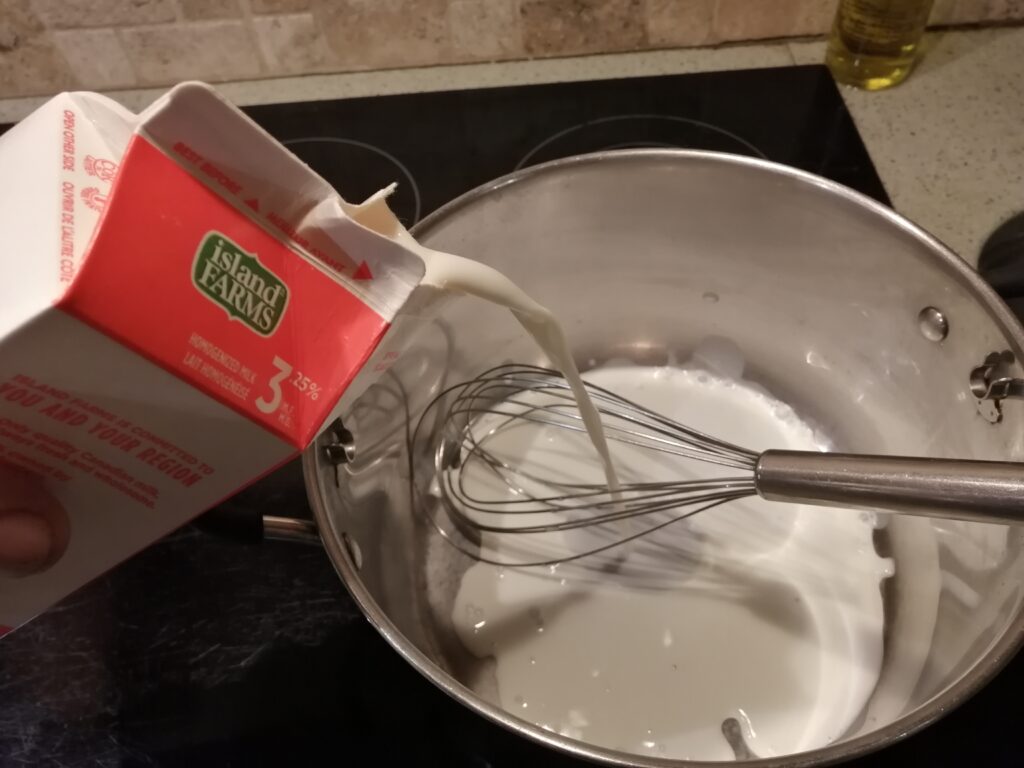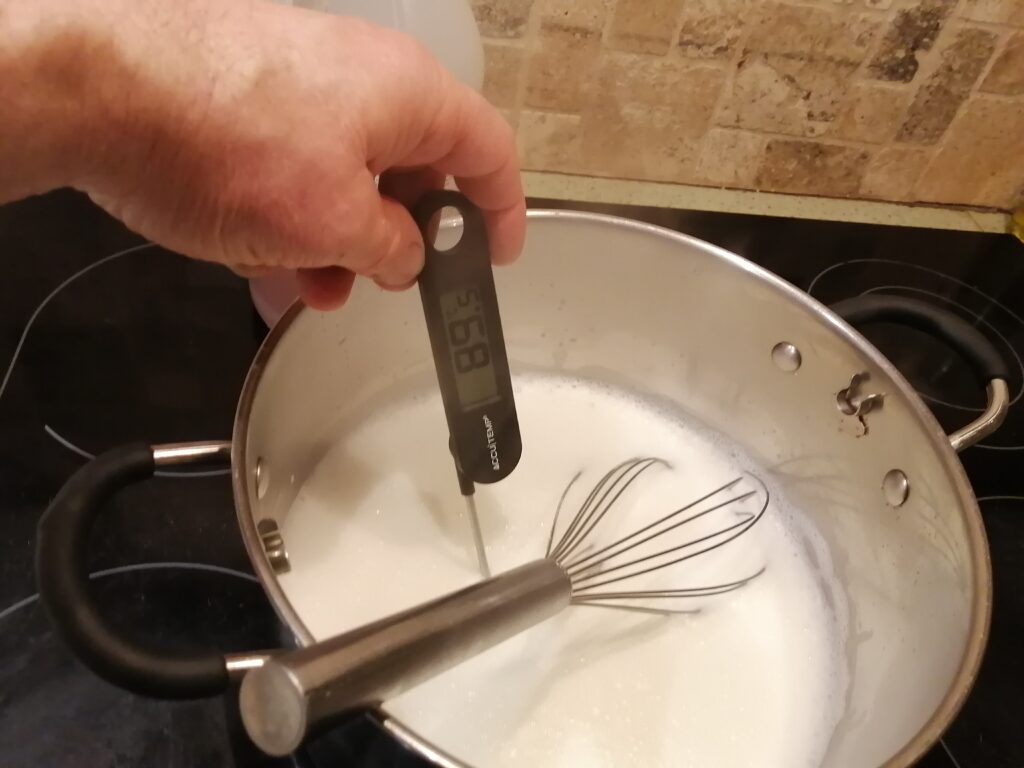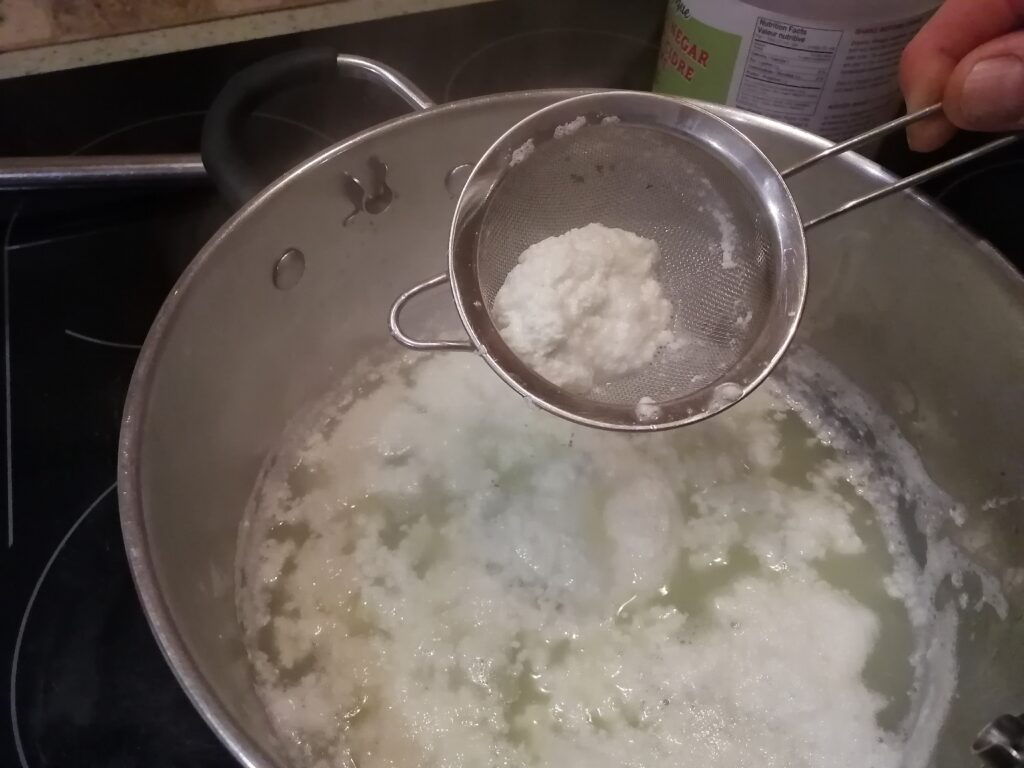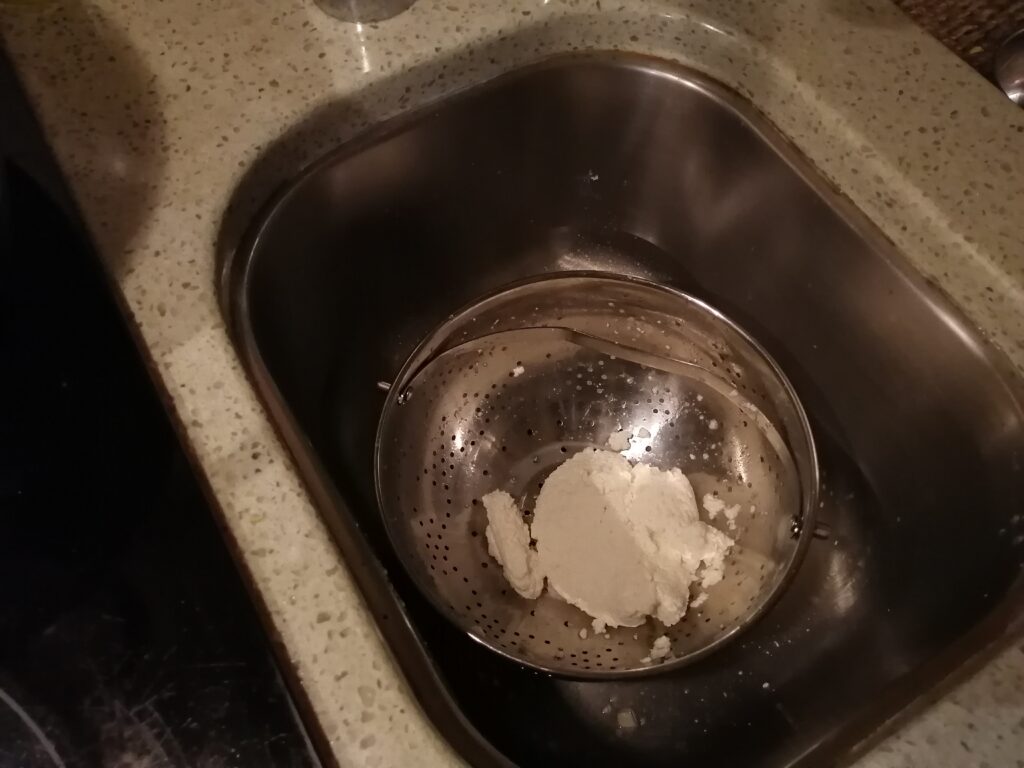Typically Ricotta is made with whey or a mixture of whey and milk. If you are a home cheese maker and have access to whey, then use half whey and half milk to make Ricotta. If you don’t have any whey, just make it with pure milk. Milk has a higher fat content than whey, so Ricotta made from milk will be creamier than Ricotta made with whey, but it will work just as well.
This is the easiest of all cheeses and can be made with any type of milk.
Ricotta is a fresh cheese and can be consumed as soon as it is drained and cooled off. Italian Ricotta is very soft and can be used as a spread or used to stuff peppers. It can be spiced and seasoned with pretty much anything from salty, savoury, hot, or sweet.
If this is your first time making cheese, or you would like more details on the cheese making process, check out our post How to Make Cheese At Home. For some fun appetizer and meal ideas you can use your homemade cheese in, visit our Recipes with Cheese page.
For supplies needed and where to find them, you can visit my Cheese Making Kit review page where I share my opinions and experience using different products and tools.
Enjoy!!!
Ingredients:
- 1 L/ 1 qrt of raw or pasteurized milk. Homo milk works well. Cow, goat or sheep.
- 1 L/ 1 qrt of whey if available. If you don’t have whey, just make the ricotta with 1 L/ 1 quart of whole milk.
- Approx. ⅓ of a cup of vinegar or lemon juice. The amount varies a bit according to the type of milk and the type of acid used.
- Optional: Whipping cream
- 1 tsp of salt ( or to your taste)
Tools:
- Pot
- Whisk or ladle for stirring
- Kitchen strainer
- Pasta strainer
- Cheesecloth
- Optional: cheese mould
Procedure:
- Prepare your kitchen strainer and pasta strainer or, if you prefer, a cheese mould. Make sure everything is clean, rinse it with warm water. Place the pasta strainer into the sink so the whey can drain away later. Line the pasta strainer with cheesecloth.
- Place the vinegar close by so you can grab it right away when needed.
- Pour your milk into the pot and start heating on medium heat while stirring. You can’t stop stirring, the milk will stick to the pan and protein might separate as a thin layer on top of the milk.

Homo milk works fine to make Ricotta
- Once the milk starts to steam, use your thermometer and heat the milk until it shows 90C/194F. Remove the pot from the heat and under constant gentle stirring add vinegar. Add it slowly while stirring.

Heating the milk

Adding apple cider vinegar
- When the acidity has dropped enough, the milk will quickly coagulate and start to make flakes, and then lumps. You will see how the milk solids separate from the whey. It will become curdled milk. Immediately stop adding acid.

Scooping out the curdled Ricotta

Drained Ricotta
- Let the curd firm up for 2 minutes then scoop the cheese with the kitchen strainer into the pasta strainer or your cheese mould. You can also pour the entire pot directly into the pasta strainer, just be careful because it will be very hot.
- This cheese will drain very fast and if you prefer a soft Ricotta type cheese, let it drain briefly, maybe 10 minutes, then transfer it into a bowl and into the fridge.
- If the ricotta gets too dry, soften it with some whipping cream.
- This cheese has no added bacteria culture, so it will not age. It is intended to be consumed right away. You can freeze it if you want to make extra for a later use.

Ricotta with fresh herbs
Troubleshoot
- The milk coagulates before you add the acid. This can happen when your milk is not fresh. The older the milk is the more acidic it gets. If this happens, don’t worry about it, as long as your milk tasted fine to begin with, your Ricotta will be fine as well.
- You added a lot of acid and the milk didn’t coagulate clearly. It only made a very fine curd, which can hardly be scooped. This can happen to goat milk. You can pour the curd into a very fine meshed cloth, trying to retrieve as much of the fine curd as possible. This can also happen to milk that came from an unhealthy animal. In the article about “What to know about cheese”, I talk about somatic cell counts. A high somatic cell count can cause this problem in your Ricotta.
- The Ricotta tastes vinegary. You used too much vinegar. Add it very slowly and at the first sign of coagulation, stop adding the vinegar. If you still pick up on the vinegar taste, use citric acid instead.
Are these instructions helpful? Please let me know how your cheese making is progressing.
Enjoy!!!




